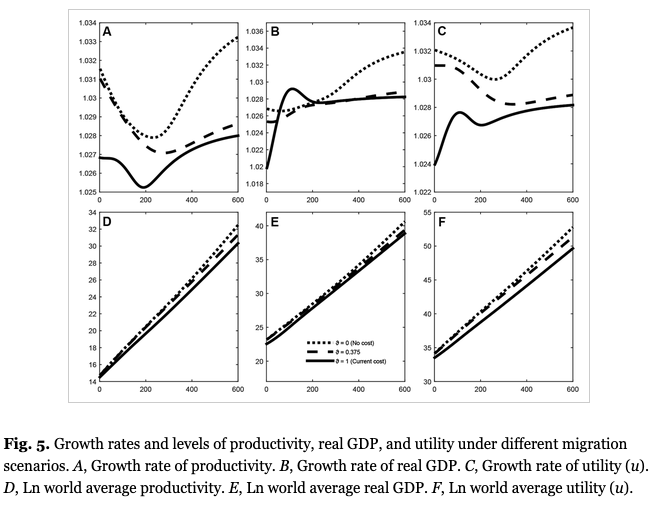Having just won the Lucas Prize, the paper “The Geography of Development,” by Klaus Desmet, Dávid Krisztián Nagy, and Esteban Rossi-Hansberg, has recently been making the rounds. From the abstract:
We develop a dynamic spatial growth theory with realistic geography. We characterize the model and its balanced-growth path and propose a methodology to analyze equilibria with different levels of migration frictions. Different migration scenarios change local market size, innovation incentives, and the evolution of technology. We bring the model to the data for the whole world economy at a 1° × 1° geographic resolution. We then use the model to quantify the gains from relaxing migration restrictions. Our results indicate that fully liberalizing migration would increase welfare about threefold and would significantly affect the evolution of particular regions of the world.
While the key advance in the paper is the way the authors model the transition to the new steady state, the calibration exercise gives a sobering estimate of the welfare gains left on the table by immigration restrictions. The table below from the paper highlights those estimates, showing the future of productivity, output, and welfare over the next 600 years (!) under the present migration regime with the solid lines, partial liberalization with the long dotted line, and full liberalization with the short dotted line. Talk about trillion-dollar bills on the sidewalk…
